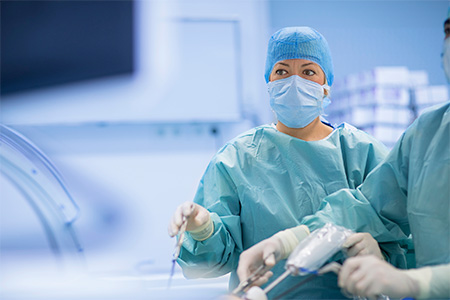Endometriosis surgery

Surgery to diagnose or treat endometriosis is typically done as a laparoscopic surgery. This means that a small fiber optic instrument is inserted through a small incision in your abdomen. Your HonorHealth gynecologist will be able to see where endometrial tissue is growing outside the uterus. This is the only way to diagnose endometriosis with certainty.
At the same time, if endometrial tissue and/or adhesions (scar tissue) are visible, your gynecologic surgeon can remove the tissue by making another small incision for laparoscopic surgical instruments. Removing the tissue should give you some pain relief and may help you to conceive if you've been dealing with infertility due to endometriosis.
Laparoscopy is typically done under general anesthesia on an outpatient basis. There should be little to no scarring, and you may be able to return to normal activities in about one to two weeks depending on how extensive your surgery is.
When the surgeon expects a very difficult case, where a lot of adhesions need to be removed, or the bowels need to detached from the uterus and ovaries, your surgeon may opt to use robotic surgery.
Follow-up treatment for endometriosis
If you're having endometriosis surgery to deal with pain, your gynecologist may recommend following the surgery with some type of medication to suppress the hormones exacerbating your endometriosis. Without medication, more than half of women report that their symptoms return within two years.
If your desired outcome is the ability to become pregnant, you may need fertility treatment as quickly as possible to conceive before endometrial tissue can grow back.